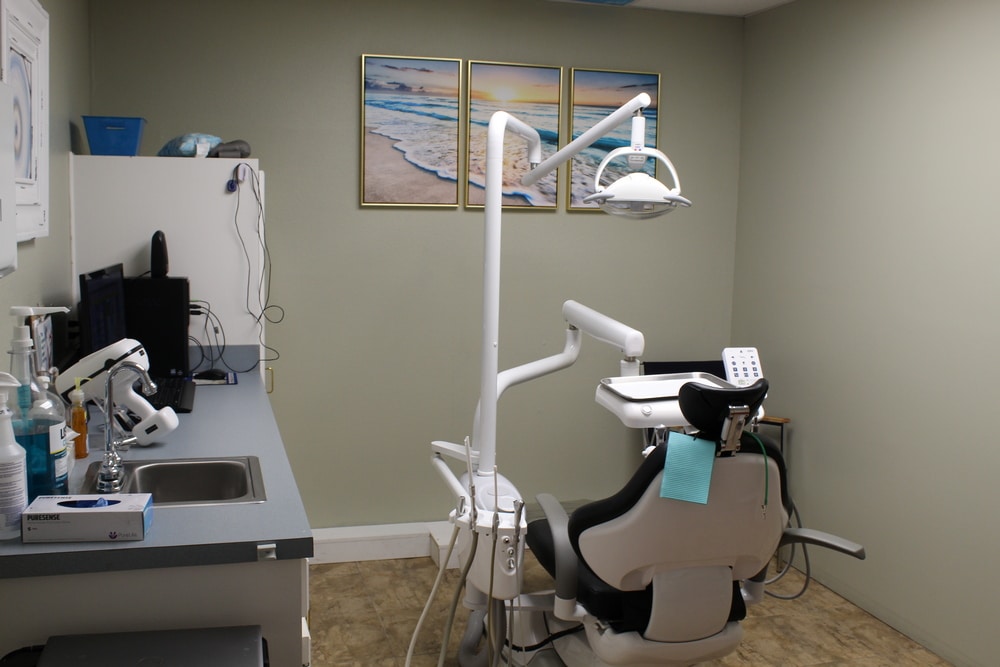Your teeth will receive damage in a variety of ways. When damage occurs to a tooth, a dental crown may be the treatment plan your doctor recommends.
A dental crown, designed to mimic the natural tooth surface, is a custom-made cap that fits precisely over the damaged tooth. This treatment, recommended by your dentist, not only provides a solution but also a significant relief for many dental issues, underlining the crucial role of dental crowns in oral health.
Teeth can need repairing for the following reasons that damage may occur:
- Cap a dental implant.
- Cap a root canal.
- A filling too large to fill a tooth.
- It used to hold a bridge in place.
- Cracked
- Decayed
- Worn down
- Weakened
- Chipped
- Discolored
- Misshapen
Impaired teeth create three problems. First, medically, teeth are exposed to bacteria when that hard protective outer layer is in disrepair. Second, chewing and other functions of the teeth become altered. Third, aesthetically unrepaired teeth are not attractive.
Run-down, uncapped teeth can ruin dental hygiene and even create medical problems.
How A Dental Crown Helps Dental Hygiene
- A dental crown plays a crucial role in maintaining dental hygiene. It protects your tooth from hot and cold sensations, which can be painful when the underlying nerve is exposed or irritated. By providing insulation, a crown prevents hot or cold food from entering your mouth and coming into contact with the nerve, ensuring a comfortable eating experience.
- A dental crown serves a practical purpose and offers aesthetic benefits. Your dentist can match the texture and color of your natural teeth to create the perfect-looking tooth. The crown results in a tooth that looks and feels natural, enhancing the overall appearance of your smile and boosting your confidence.
- A cap extends the lifespan of the tooth. Teeth wear out depending on genetics and your oral health lifestyle. A crown restores the life, duration, and use of the tooth.
- A cap provides function. Chewing and biting are the primary functions of teeth. Once placed, patients find an instant improvement in chewing and biting.
- Restores worn-down teeth. As mentioned, teeth wear down for various reasons. When a tooth wears down, a crown restores it, giving hope for restoring dental health.
Preparing A Tooth For A Crown
Each dental crown is unique, just like a snowflake. Your dentist applies standard procedures to your tooth, ensuring a personalized and precise treatment plan tailored to your needs.
Getting a dental crown commences with a thorough examination and X-rays. Diagnostic tools help your dentist determine the necessity of a crown and plan the treatment accordingly.
A local anesthetic is applied to numb all the pain. After a quick, sharp sting, the dentist administers the anesthesia. It usually takes about five minutes for a small portion of your mouth to be completely numb.
- Gum tissues around the tooth will be prepped. This preparation is carried out by temporarily pushing the gum away from the tooth. The gum is kept away from the tooth through the procedure. By keeping your gum away from the tooth, your doctor can get an impression of the entire tooth.
- An impression of your tooth is taken. From this impression, a mold is made and sent to a dental lab. The lab can create a perfect replica of your tooth in two weeks.
- The surface of the tooth is prepared to receive the crown. Your dentist will scrape away a tiny layer of enamel from your tooth.
- A temporary crown is placed as you await the creation of a permanent crown from the lab. The temporary crown will protect your tooth from hot and cold food while effectively facilitating chewing.
- The final step is getting a permanent crown. Your dentist will again push the gums away from the tooth, allowing for the removal of the temporary crown and the placement of the permanent one. The permanent crown secures a unique dental adhesive. As the gumline settles back around the tooth, it creates an aesthetic appearance that gives you the perfect tooth.
Materials Used For A Crown
Dental crowns require various materials, with ceramic as a critical ingredient. Depending on your specific needs, your doctor will determine the best material for your treatment plan and ensure you are well-informed about available options.
- Full metal crowns can be lighter than a less durable ceramic crown. As a result, a metal crown preserves more of the tooth. Metal crowns prevent plaque buildup, resist corrosion, and do not absorb foods. Metal crowns are used primarily for large back molars.
- Noble alloys create noble crowns. At least 25% of the crown’s makeup must consist of noble alloys: gold, palladium, silver, and smaller amounts of iridium, ruthenium, and platinum. Most of these alloys are used with ceramic materials to create the crown.
- Titanium can be fused with porcelain to create a crown. The ceramic creates a natural tooth appearance. Titanium fused crowns are effective for patients who habitually grind or clench their teeth. Typically, titanium-based crowns cap back teeth.
- Silica acts as a resin for mechanical purposes and offers a more translucent appearance for a better aesthetic.
- Alumina adds strength to permanent prostheses such as crowns or bridges. This alloy blends well with ceramic for a robust and natural look.
- Zirconia crowns are made from zirconium oxide, a white ceramic compound that is more robust than porcelain and even some metal alloys.
- Lithium disilicate crowns combine both silicon and lithium. Lithium disilicate is used as an alloy with ceramic for crowns or as a resin to work or fractures in a tooth.
Why Root Canals Need Crowns
As mentioned, many conditions can require a crown. The treatment plan is more involved when a tooth needs a root canal. Remember that even if a tooth needs a root canal, it may not need a crown.
A root canal can save a tooth. However, for your doctor to remove the decay from your damaged root, the protective outer layer of your teeth can be compromised. In such cases, a crown restores the tooth’s strength and function and protects it from further damage.
The objective of the root canal is to remove decaying pulp from the canal that houses the root of your tooth. To perform a root canal, your doctor must drill through the tooth’s protective outer layer. The doctor will also have to reshape and fill your cleaned-out canals.
Your doctor can use a tooth-colored filling to fill the hole left from the drilling. When an area is too large, a crown will be necessary.
A crown is an additional procedure that usually requires a second visit to the dentist’s office.
Potential Complications of A Dental Crown
Dental crown placement is one of the most common procedures your dentist carries out daily. Even though it is routine, it does not mean there can not be complications you should at least be aware of after receiving a crown.
- Sensitivity can occur as your mouth and body adjust to the new crown. See your dentist immediately if you start experiencing any sensitivity.
- Chipped crowns occur just as teeth can get chipped. Remember that a crown can chip years later due to an accident or improper care. See your dentist if this happens.
- Gum disease creates poor dental hygiene. Once placed, a crown prevents gum disease.
- Nerve damage with a poorly placed crown. Compression from the cap can traumatize other teeth and surrounding gums.
- Tooth decay can still occur. Poor dental hygiene can lead to a cavity in a placed crown.
- A misplaced crown creates bite problems.
- Grayed gums are not aesthetically pleasing—grayed gums are caused by the metal from the crown extending behind the gums. The crown and the tooth are healthy, but most people consult their dentist for cosmetic reasons.
- Sensitivity can occur right away. It may be your body’s way of adjusting to something new. If the sensitivity persists, call your dentist.
- Cosmetic issues result from your dentist not choosing the proper shade or color of the surrounding teeth.
- Gum irritation can occur for many reasons. If your gums feel irritated around the gums of a crown, see your doctor so they can make the necessary corrections.
- Allergic reactions can occur due to metal in a crown, and even rare allergic reactions can occur from other materials that create a crown.
Remember that Terry County Dental is only a phone call away if you experience any complications from a crown.
To prevent complications, Terry County Dental considers all the following factors before placing a crown:
- Patient factors include expectations, ability to maintain dental hygiene, and financial costs.
- Biological factors include caries (when parts of tooth enamel on the outside of the tooth wear out the enamel and can lead to cavities)
- Periodontal health status and periodontal disease are risks. Periodontal is the dental term for gums.
- Occlusion or occlusion risk factors consider how teeth line up when biting. The dentist must replace the crown with the previous tooth’s exact shape to allow for a proper bite.
- Mechanical factors affect the tooth’s size, width, shape, and previous shape. Your dentist will also evaluate the root size and length. By considering the entire tooth, your dentist can create a crown that is the perfect fit.
- Aesthetic factors such as the shape and color of the tooth and the materials used to create the crown will determine the harmony of your new crown.
Call today and schedule an exam.
Service area: Terry County: Brownfield, Meadow, Needmore, Tokio, Wellman, Johnson … Yoakum County: Plains, Denver City, Allred … Gaines County: Seminole, Seagraves, Loop, Ashmore … Hockley County: Smyer, Levelland, Anton, Sundown, Ropesville, Whiteface, Opdyke West, Pep, Roundup, Whitharral … Lubbock County: Lubbock, Wolforth, New Deal, Ransom Canyon, Slayton, Buffalo Springs, Shallowater, Idalou, Ropesville, Meadow, Posey, Acuff, Reese City … Garza County: Post, Southland, Justiceberg, Close City … Lynn County: Tahoka, O’Donnell, New Home, Wilson, Grassland, Wayside … Dawson County: La Mesa, Welch, Ackerly, Los Ybanez

